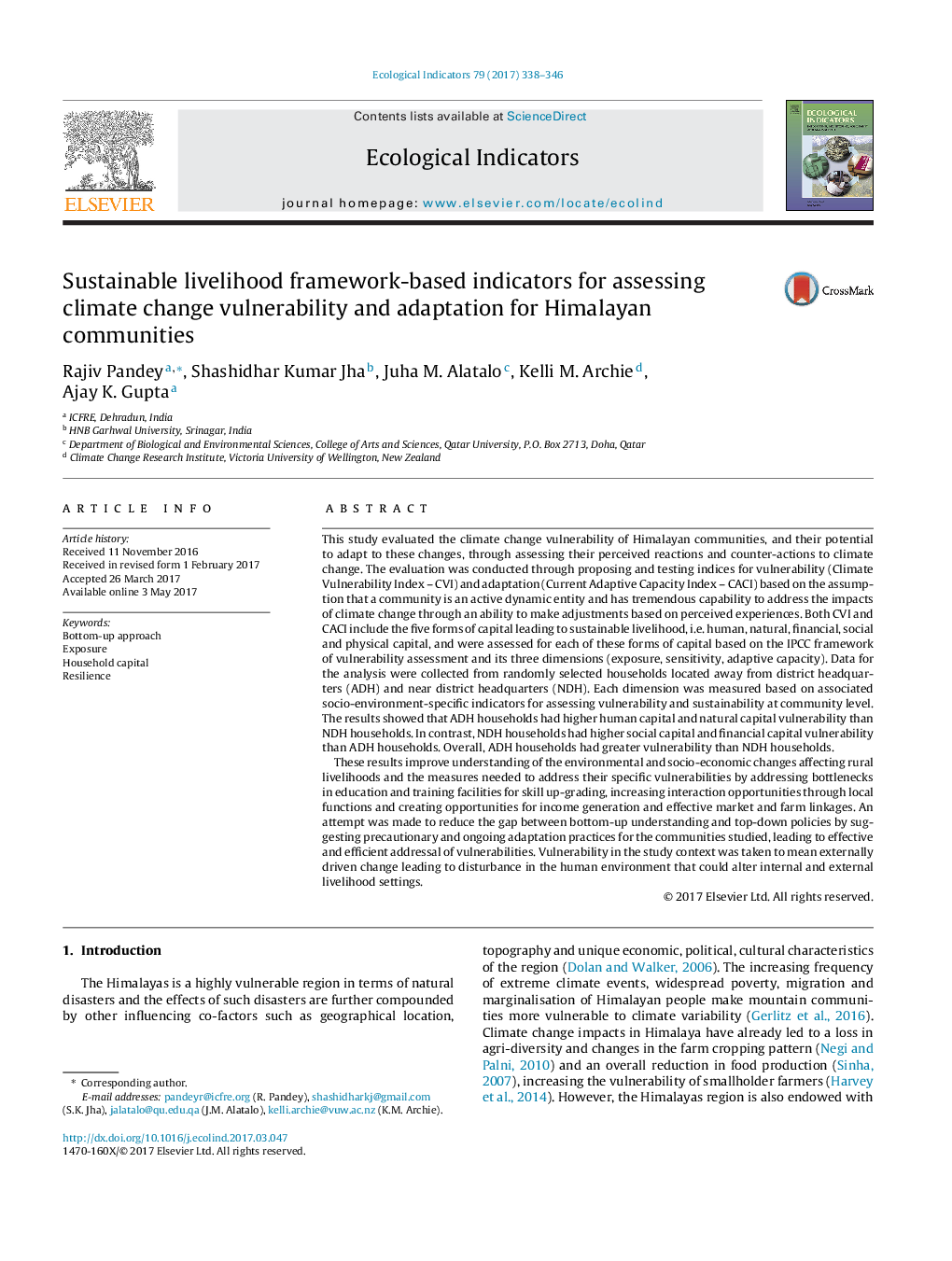| کد مقاله | کد نشریه | سال انتشار | مقاله انگلیسی | نسخه تمام متن |
|---|---|---|---|---|
| 5741781 | 1617123 | 2017 | 9 صفحه PDF | دانلود رایگان |
- This study assesses climate change vulnerability of Himalayan communities and their potential to adapt to these changes.
- The assessment is based on the five capitals of sustainable livelihood framework.
- The study results that the households reside away to district head quarter are in disadvantageous position and more vulnerable than those households, who reside near to district head quarter in mountainous settings.
This study evaluated the climate change vulnerability of Himalayan communities, and their potential to adapt to these changes, through assessing their perceived reactions and counter-actions to climate change. The evaluation was conducted through proposing and testing indices for vulnerability (Climate Vulnerability Index - CVI) and adaptation (Current Adaptive Capacity Index - CACI) based on the assumption that a community is an active dynamic entity and has tremendous capability to address the impacts of climate change through an ability to make adjustments based on perceived experiences. Both CVI and CACI include the five forms of capital leading to sustainable livelihood, i.e. human, natural, financial, social and physical capital, and were assessed for each of these forms of capital based on the IPCC framework of vulnerability assessment and its three dimensions (exposure, sensitivity, adaptive capacity). Data for the analysis were collected from randomly selected households located away from district headquarters (ADH) and near district headquarters (NDH). Each dimension was measured based on associated socio-environment-specific indicators for assessing vulnerability and sustainability at community level. The results showed that ADH households had higher human capital and natural capital vulnerability than NDH households. In contrast, NDH households had higher social capital and financial capital vulnerability than ADH households. Overall, ADH households had greater vulnerability than NDH households.These results improve understanding of the environmental and socio-economic changes affecting rural livelihoods and the measures needed to address their specific vulnerabilities by addressing bottlenecks in education and training facilities for skill up-grading, increasing interaction opportunities through local functions and creating opportunities for income generation and effective market and farm linkages. An attempt was made to reduce the gap between bottom-up understanding and top-down policies by suggesting precautionary and ongoing adaptation practices for the communities studied, leading to effective and efficient addressal of vulnerabilities. Vulnerability in the study context was taken to mean externally driven change leading to disturbance in the human environment that could alter internal and external livelihood settings.
Journal: Ecological Indicators - Volume 79, August 2017, Pages 338-346
